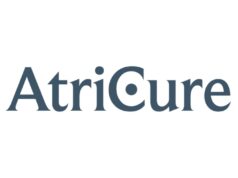On 8 October, the FDA’s Circulatory Systems Devices Advisory Panel voted that biventricular pacing with Medtronic devices is beneficial for treating patients who have atrioventricular block and left ventricular systolic dysfunction, compared to conventional right ventricular pacing.
The panel voted that the overall clinical benefits outweigh the risks in treating this specific patient population (Yes: 4 votes; No: 3 votes; Abstain: 1 vote). The panel’s favourable recommendation is based on data from the landmark BLOCK HF clinical trial, which used Medtronic cardiac resynchronisation therapy-pacemakers and -defibrillators (CRT-P and CRT-D).
Most patients with atrioventricular block are currently indicated to receive conventional right ventricular pacing via a single or dual chamber pacemaker or implantable cardioverter defibrillator (ICD). However, in the BLOCK HF clinical trial, biventricular pacing showed a 27% relative risk reduction in the composite study endpoint of death, healthcare utilisation visits requiring IV heart failure therapy, and significant increase in left ventricular end systolic volume index; and improvements in both cardiac function and quality of life.
The advisory panel voted in favour of Medtronic CRT-P and CRT-D devices in this patient group based on the technology’s strong safety (Yes: 6 votes, No: 1 votes) and efficacy (Yes: 7 votes, No: 0 votes) profiles. The FDA now will consider the panel’s feedback as it reviews the request from Medtronic to expand treatment indications for its CRT-P and CRT-D devices to include New York Heart Association (NYHA) Class I, II and III heart failure, patients with pacemaker-indicated second or third degree atrioventricular block, or first degree atrioventricular block where a requirement for a high percentage of ventricular pacing is clear, and left ventricular ejection fraction less than or equal to 50%.
“The results of BLOCK HF offer us a potential new treatment paradigm for heart failure patients with AV block,” said Anne Curtis, BLOCK HF lead investigator and chair of the Department of Medicine at the University at Buffalo School of Medicine and Biomedical Sciences, Buffalo, USA. “This new approach could fill an unmet need for these patients.”









